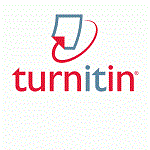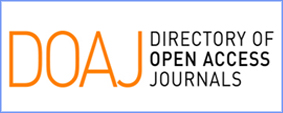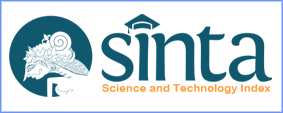Kemampuan Berpikir Kreatif Mahasiswa Calon Guru Pada Mata Kuliah Trigonometri Secara Daring Berbantuan Google Classroom
Abstract
Abstrak: Seorang calon guru sangat perlu untuk memiliki kemampuan berpikir kreatif guna memberikan pembelajaran dalam pendidikan yang inovatif sehingga siswa yang diajarkan memiliki kemampuan berpikir kreatif untuk menghadapi tantangan di masa depan. Tujuan dari penelitian ini adalah untuk mendeskripsikan kemampuan berpikir kreatif mahasiswa calon guru pada mata kuliah trigonometri secara daring berbantuan google classroom. Jenis penelitian ini adalah penelitian kualitatif deskriptif yang dilakukan pada mahasiswa S1 Pendidikan Matematika Universitas Negeri Malang angkatan 2020 semester gasal tahun ajaran 2020/2021. Tes kemampuan berpikir kreatif diberikan pada 37 mahasiswa, kemudian dipilih tiga mahasiswa dengan mempertimbangkan kemampuan matematika pada tugas yang diberikan sebelum pemberian tes berpikir kreatif menggunakan teknik purposive sampling. Setelah proses analisis dilakukan, hasil penelitian menunjukkan bahwa mahasiswa kategori tinggi memenuhi tiga aspek kemampuan berpikir kreatif seperti kelancaran, keluwesan, dan kebaruan. Mahasiswa kategori sedang memenuhi dua aspek kemampuan berpikir kreatif seperti keluwesan dan kebaruan. Sedangkan mahasiswa kategori rendah tidak memenuhi aspek indikator kemampuan berpikir kreatif sama sekali. Aspek keluwesan dan keunikan kemampuan berpikir kreatif yang dimiliki oleh mahasiswa kategori tinggi dan sedang salah satunya dipengaruhi oleh pemanfaatan pembelajaran daring berbantu google classroom.
Kata kunci: Berpikir Kreatif; Calon Guru; Google ClassroomAbstract: A prospective teacher ought to have the ability to think creatively to provide learning in innovative education, with the expectation to build the students’ ability to think creatively in facing challenges in the future. The purpose of this study was to describe the creative thinking skills of prospective teacher students in online trigonometry courses assisted by Google Classroom. The type of this research is a descriptive qualitative research conducted on Undergraduate Mathematics Education students at State University of Malang, class 2020 odd semester, 2020/2021 academic year. The test of creative thinking ability was given to 37 students, then three students were selected for the research subject. The considerations were based on their mathematical ability on the pre-assessment test beforehand using purposive sampling technique. After the analysis process was conducted, the results showed that the high category students fulfilled three aspects of creative thinking abilities such as fluency, flexibility, and novelty. Students in the middle category fulfill two aspects of creative thinking skills such as flexibility and novelty. Meanwhile, the low category students did not meet the indicator aspects of the ability to think creatively at all. Aspects of flexibility and uniqueness of creative thinking skills possessed by high and medium category students are influenced by online learning system assisted by Google Classroom.
Keywords: Creative Thinking; Prospective Teacher; Google Classroom
Keywords
Full Text:
PDFReferences
Agustiono, M., Ahman, E., Machmud, A., & Waspada, I. (2020). PENERAPAN BLENDED LEARNING BERBASIS GOOGLE CLASSROOM TERHADAP KETERAMPILAN BERPIKIR KREATIF &KEMANDIRIAN BELAJAR. Jurnal Pendidikan Ekonomi UM Metro, 8(2), 14–20.
Birgili, B. (2015). Creative and Critical Thinking Skills in Problem-based Learning Environments. Journal of Gifted Education and Creativity, 2(2), 71–71. Diambil dari https://doi.org/10.18200/jgedc.2015214253
Christopher, I. O., Julie, O. I., & Janehilda, A. O. (2020). Assessment of Students’ Creative Thinking Ability in Mathematical Tasks at Senior Secondary School Level, 12(2), 494–506.
Defitriani, E. (2014). Profil Berpikir Kreatif Siswa Kelas Akselerasi Dalam Memecahkan Masalah Matematika Terbuka. Jurnal Ilmiah Matematika dan Pendidikan Matematika, 6(2), 65. Diambil dari https://doi.org/10.20884/1.jmp.2014.6.2.2905
Fardah, D. K. (2012). Analisis Proses dan Kemampuan Berpikir Kreatif Siswa dalam Matematika Melalui Tugas Open-Ended. Kreano: Jurnal Matematika Kreatif-Inovatif, 3(2). Diambil dari https://doi.org/10.15294/kreano.v3i2.2616
Handayani, U. F., Sa’dijah, C., & Susanto, H. (2018). Analisis Kemampuan Berpikir Kreatif Matematis Siswa SMP Dalam Menyelesaikan Soal Adopsi ‘PISA.’ Jurnal Math Educator Nusantara: Wahana Publikasi Karya Tulis Ilmiah di Bidang Pendidikan Matematika, 4(2), 143. Diambil dari https://doi.org/10.29407/jmen.v4i2.12109
Hapsari, S. A., & Pamungkas, H. (2019). Pemanfaatan Google Classroom Sebagai Media Pembelajaran Online Di Universitas Dian Nuswantoro. WACANA: Jurnal Ilmiah Ilmu Komunikasi, 18(2). Diambil dari https://doi.org/10.32509/wacana.v18i2.924
Hotaman, D. (2008). the Examination of the Basic Skill Levels of the Students’ in Accordance With the Perceptions of Teachers, Parents and Students. Online Submission, 1(2), 39–55.
Huljannah, M., Sa’dijah, C., & Qohar, A. (2018). Profil Berpikir Kreatif Matematis Mahasiswa Pendidikan Guru Sekolah Dasar. Jurnal Pendidikan: Teori, Penelitian, dan Pengembangan, 3(11), 1428–1433.
Islam, S. (2018). Bangladeshi University Students’ Perception on Using Google Classroom for Teaching English. international Journal of Psycho-Educational Sciences, 8(2), 1–9.
Kardoyo, Nurkhin, A., Muhsin, & Pramusinto, H. (2020). Problem-based learning strategy: Its impact on students’ critical and creative thinking skills. European Journal of Educational Research, 9(3), 1141–1150. Diambil dari https://doi.org/10.12973/EU-JER.9.3.1141
Marta Putra, D., & Nurlizawati, N. (2019). Lesson Study dalam Meningkatkan Ketrampilan 4C (Critical Thingking, Collaborative, Communicative dan Creative) pada Pembelajaran Sosiologi yang Terintegrasi ABS-SBK di SMAN 1 Pasaman. Jurnal Sikola: Jurnal Kajian Pendidikan dan Pembelajaran, 1(2), 139–146. Diambil dari https://doi.org/10.24036/sikola.v1i2.19
Munandar, U. (2009). Pengembangan Kreativitas Anak Berbakat. Jakarta: Rinea Cipta.
Mustari, M., Ph, D., Rahman, M. T., & Ph, D. (2014). Manajement Pendidikan. RajaGrafika Persada.
P21 Framework Definition. (2015).
Sa’dijah, C. (2013). Kepekaan Bilangan Siswa SMP Melalui Pembelajaran Matematika Kontekstual Yang Mengintegrasikan Keterampilan Berpikir Kreatif. Jurnal Pendidikan dan Pembelajaran Universitas Negeri Malang, Vol. 20(No. 2).
Sa’dijah, C, Rafiah, H., Gipayana, M., Qohar, A., & Anwar, L. (2016). Asesmen Pemecahan Masalah Open-Ended untuk Mengukur Profil Berpikir Kreatif Matematis Siswa Berdasar Gender. Sekolah Dasar, 2, 147–159.
Sa’dijah, Cholis, Handayani, U. F., Sisworo, Sudirman, Susiswo, Cahyowati, E. T. D., & Sa’Diyah, M. (2019). The Profile of Junior High School Students’ Mathematical Creative Thinking Skills in Solving Problem through Contextual Teaching. Journal of Physics: Conference Series, 1397(1). Diambil dari https://doi.org/10.1088/1742-6596/1397/1/012081
Sabran, & Sabara, E. (2019). Keefektifan Google Classroom sebagai media pembelajaran. PROSIDING SEMINAR NASIONAL LEMBAGA PENELITIAN UNIVERSITAS NEGERI Makasar, 122–125. Diambil dari https://webcache.googleusercontent.com/search?q=cache:SS_jKM_r2TAJ:https://ojs.unm.ac.id/semnaslemlit/article/download/8256/4767+&cd=2&hl=id&ct=clnk&gl=id
Setiawan, T. B., Dafik, & Laili, N. (2017). Profil Kemampuan Berpikir Kreatif Siswa Kelas VIII dalam Memecahkan Masalah Matematika Soal Model PISA Fokus Konten Quantity Berdasarkan Kearifan Lokal, 1–10.
Silver, E. A. (1997). Fostering creativity through instruction rich in mathematical problem solving and problem posing. Zdm, 29(3), 75–80. Diambil dari https://doi.org/10.1007/s11858-997-0003-x
Yusnaeni, Y., Corebima, A. D., Susilo, H., & Zubaidah, S. (2017). Creative Thinking of Low Academic Student Undergoing Search Solve Create and Share Learning Integrated With Metacognitive Strategy. International Journal of Instruction, 10(2), 245–262. Diambil dari https://doi.org/10.12973/iji.2017.10216a
Article Metrics
Abstract has been read : 784 timesPDF file viewed/downloaded: 0 times
DOI: http://doi.org/10.25273/jipm.v10i2.8776
Refbacks
- There are currently no refbacks.
Copyright (c) 2021 JIPM (Jurnal Ilmiah Pendidikan Matematika)

This work is licensed under a Creative Commons Attribution-ShareAlike 4.0 International License.
View JIPM Stats
JIPM indexed by:
Copyright of JIPM (Jurnal Ilmiah Pendidikan Matematika) ISSN 2502-1745 (Online) and ISSN 2301-7929 (Print)













